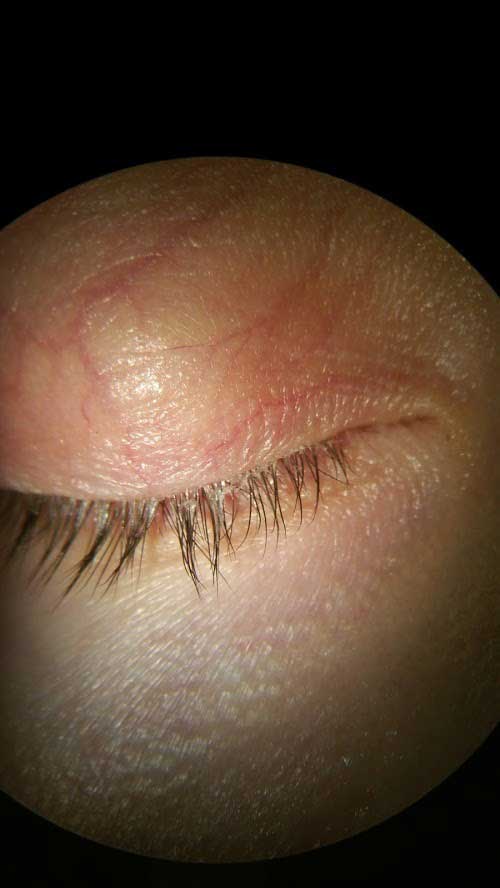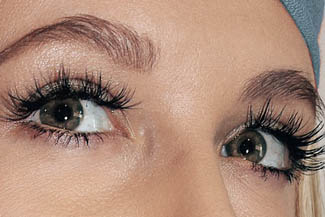
Dry is a chronic condition that affects 1 out of 3 adults in North America.
Your tears consist of 3 layers:
- Mucus layer: It is the innermost and thinnest part of the tear film. It consists of mucin secreted by goblet cells and glands of Manz. It converts the hydrophobic corneal surface into a hydrophilic one which allows for the aqueous layer to adhere to the cornea.
- Aqueous layer: It makes up the middle layer, and makes for the bulk of tear film. It is secreted by the main and accessory lacrimal glands. The tears mainly comprise of water and small quantities of solutes such as sodium chloride, sugar, urea, and proteins. It also contains antibacterial substances like lysozyme, beta-lysin, and lactoferrin. These solutes are what create a basic pH and salty taste.
- Lipid or oily layer: It is the outermost layer of tear film formed by the secretions of Meibomian. This layer prevents the overflow of tears and slows their evaporation of tears. It helps to lubricate the eyelids as they slide over the surface of the cornea
The function of the tear film:
- Keeps the cornea and conjunctiva moist
- Provides oxygen to the corneal epithelium.
- Washes away debris and irritants.
- Allows for clear vision
- Prevents infection due to the presence of antibacterial substances

Symptoms of dry eye can be mild to moderate or severe. General dry eye symptoms include sporadic watery eyes, intermittent blurry vision that clears with blinking the eyes, and/ or contact lens discomfort. Even light sensitivity in indoor lighting or moderate settings can be a symptom. These symptoms can progress to chronic red, burning, itchy, eyes with severe pain and discomfort that it starts to interfere with daily life routines and activities of daily living. When left untreated can lead to extreme outcomes like scarring of the meibomian (oil) glands, cornea, and or the surrounding tissue.
What are the Effects of Delay of Treatment?
Timing and intervention are important. The delay of treatment, or lack of compliance in treatment and management, makes the dry eye nature more complex with time. Dry eye is multifactorial. Attempting to only fix a part of the problem, or having a bandaid fix, breaks down the treatment plan and reduces your overall outcome and success.
Lipid Layer of Tear Film
Meibomian Gland Forceps
What is Meibomian Gland Dysfunction?
Meibomian Gland Dysfunction (MGD) is the most common cause of dry eyes. The Meibomian Glands are oil glands along your upper and lower eyelids. There are approximately 25-40 glands in the upper eyelid and 20-30 glands in the lower eyelids. These glands secrete meibum, an oil, onto the surface of your eye. This meibum layer forms the outer layer of the three tear layers. The oil acts as a lubricant and also prevents your tears from evaporating. When these glands malfunction, you may have low oil output or poor quality secretions and consequently suffer from dry eyes as a result of an unstable tear film. You might have heard of the terms Evaporative Dry Eye or Inflammatory Dry Eye. Meibomian gland dysfunction is a form of both.
What causes of meibomian gland dysfunction?
Blinking-When you blink, your upper and lower eyelids squeeze and touch each other, and this pressure causes the meibomian glands to express oil. This oil is vital for stable tear film. Unfortunately, with the added screen time, and use Of digital devices, many of us are partial blinkers, meaning that when we blink, our eyelids don't actually touch each other.
Compounding this effect, when we read or stare at computer monitors, our blink rate also decreases.
Consequently, when we don't have complete full closure blinks, our meibomian glands don't get used; and subsequently when they don't get used, the meibomian glands get clogged, backlogged and dysfunctional.
How do you treat this?
It is important to treat the underlying disease as early as possible. If left untreated, meibomian gland dysfunction can become meibomian gland atrophy, which can most likely cause permanent irreversible damage to your glands. Thus, leaving you powerless and living with a poor quality of life. Book an appointment with Dr. Pink Sidhu and Associates at Weston Eyecare Optical and Optometry, to have your dry eye consultation.
Treatment for Dry and Watery Eyes
The most common form of Dry Eye is the Evaporative form, which affects 8 out of 10 dry eye cases. That’s 80% of the dry eye sufferers. This is called meibomian gland dysfunction. This form results from a shortage of oil on the surface of your tears caused by a blockage in your eyelid (Meibomian) glands, leading to tears evaporating faster than normal. This lack of tear production, or inefficient tear formation, is often referred to as Meibomian Gland Dysfunction (MGD). We can treat and manage Meibomian Gland dysfunction so that it doesn’t lead to meibomian gland atrophy which refers to the death and permanent loss of the meibomian glands.
Blepharitis Photos







Sunday hours are available by appointment.